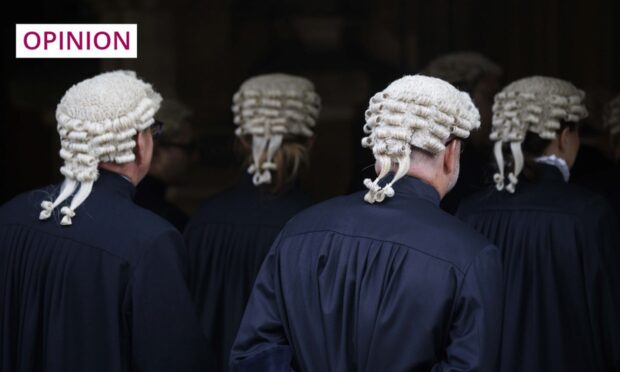There is no doubt our justice system offers an impressive spectacle of the kind Britain loves to indulge in.
Whether it’s the ceremonial garters and Black Rod pageantry of Westminster, or the imposing gowns and curled wigs of our courtrooms, we specialise in historic procedures with colourful costumes, archaic language, and enough pomposity sprinkled like fairy dust over proceedings to remind the serfs just who is in charge here.
A smattering of “ordinary folk” are allowed to press their noses up against the windows of power – deference obligatory – and in courtrooms, that function belongs to juries. Watching the recent Channel 4 documentary series The Jury suggests the curtain should now come down on the whole pantomime. Oh, yes, it should.
The premise of The Jury is simple enough. To get an insight into the normally secret dynamics of a jury room, the entire transcript of a real trial is played out using actors. The accused is charged with the murder of his wife, but pleads guilty to manslaughter, using the legal defence of “loss of control”.
A jury watches the whole proceedings under the same conditions as a real-life trial. What they don’t know is that, behind the wall, sits a second jury. Will the two groups watching the same evidence reach the same conclusion? Oh, yes, they will? Oh, no, they won’t.
On paper, the jury system is admirable. It’s trial “by peers” – a nod to the fact that the system is there to serve public interest. But the deliberations in the reconstructed jury rooms showed the deep flaws in the process, from ignorance of the finer points of the law being judged, to the horrific, discriminatory attitudes and language used to discuss them.
It becomes a complex mess of a debate, unstructured and unsupported by anyone with legal knowledge. One woman, who insists the accused should be guilty of murder, feels forced “because of the law” to convict of manslaughter. Next door, the entire group feel compelled “because of the law” to convict of murder. Look behind you!
Jurors’ own experiences influence their decisions
What becomes quickly apparent is the way in which jury members transfer emotions from themselves to the accused. There is the woman who has suffered an abusive relationship; the man who understands loss of control because he has thrown a cup of coffee over his wife in an argument.
The jurors’ life experiences influence the decision as much as the evidence. Each starts to vicariously imagine themselves as the person in that dock. Inevitably, some want to excuse the accused because they want to excuse themselves.
Egos swell in that room, guzzling up the oxygen of justice
Then, there’s the ability of dominant characters to intimidate others and sway the argument. One overbearing juror smirks triumphantly when he convinces another to switch sides, punching the air, and discussing his satisfaction that others are now “in his corner”. The satisfaction is not about truth, but about power. Egos swell in that room, guzzling up the oxygen of justice.
The myth that an accused’s peers are the best people to judge them is quickly dispelled. The deceased woman, who died after her head was smashed three times with an industrial hammer, had been diagnosed with a personality disorder, and her behaviour was described as erratic and confrontational. One female juror wept because some of her fellow jurors seemed to think that was explanation enough for the victim’s death.
“What we do know,” said one man, “is that she didn’t keep her legs closed very often.” “There were a lot of geezers,” agreed another. “She had been around the roundabout,” chipped in a third. All of which was completely irrelevant to the hammer stuck in her head.
More radical change is necessary
In Scotland, proposals to modify the jury system have been made in the last year, suggesting reducing the number of jurors from 15 to 12 and scrapping the not proven verdict. But it’s hard to avoid the conclusion that more radical change is necessary.
Juries of random people with no knowledge of the law, most of whom are peeved at the inconvenience of being called away from work (particularly if they are self-employed, because they receive no compensation), are making dodgy decisions of life-changing magnitude.
The forensic psychiatrist in The Jury made no conclusion about the accused’s loss of control, saying that was a judgment for the jury. But most ordinary people feel ill-equipped to make decisions about states of mind, or points of law. Those who feel confident about it are probably least equipped to do so.
It would be unacceptable if predominantly privileged, middle-class judges sat in splendid isolation in their fancy robes, passing down verdicts. But juries need an injection of professionalism – at least the addition of people who receive training and recompense for their work, and who, with experience, recognise the manipulations of the courtroom.
Britain is the birthplace of the jury trial, but that doesn’t mean we should get over-reverent about it, stuck in tradition without modernising, refining or developing the system. It’s time to care less about the spectacle and more about justice.
Catherine Deveney is an award-winning investigative journalist, novelist and television presenter


Conversation